Norwich Plantation Garden
|
A glimpse into a bygone age, while offering a haven of peace and tranquility in the centre of Norwich |
|
An Introduction to Norwich Plantation Garden
|
The Planation Garden is a secret Victorian garden, hidden away next to the Catholic Cathedral on the edge of Norwich city centre. The garden is nearly 3 acres in size, arranged in a giant 'U' shape and features include a gothic fountain, flower beds, a Parterre contained in a lawn, an Italian terrace, ‘medieval’ wall, rustic summer-house, woodland walkways and a rustic bridge. It is a haven of peace and tranquility and a glimpse into a bygone age, located in the centre of Norwich.
The gardens history dates back to 1856, when
a prosperous upholsterer and cabinet maker, called Henry Trevor, decided to convert a disused chalk quarry, located just outside Norwich city walls. He spent a lot of his own money and much effort transforming the quarry into magnificent gardens, heavily influenced by the gardens associated with grand country houses in the Victorian period. The gardens fell into disrepair after the WW2, but it has since been restored by The Plantation Garden Preservation Trust, who continue to maintain and improve the garden for current and future generations to enjoy. |
|
Norwich Plantation Garden Guided Picture Tour
|
We start our tour of Norwich Plantation Garden by examining the Victorian map displayed at the entrance. Although the map shows the garden during the late 19th century, it still shows the current layout and visitors can use it to plan their route. The map shows a large shaded building (near the entrance) which was a Victorian glasshouse, which was dismantled in 1912 and the site is now marked by flower beds. A good overview of the garden can seen from the rustic bridge, just inside the garden entrance. |
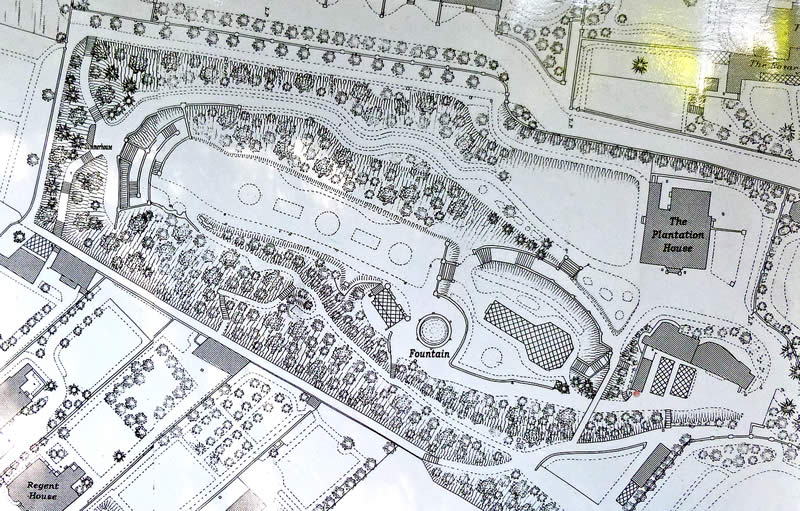
A plan of Norwich Plantation Garden |
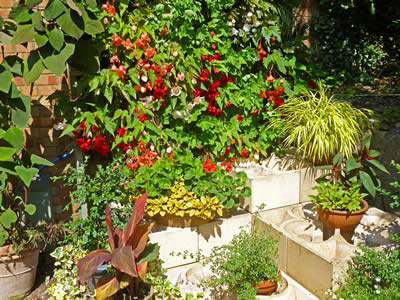
Colourful flower pots around the entrance |
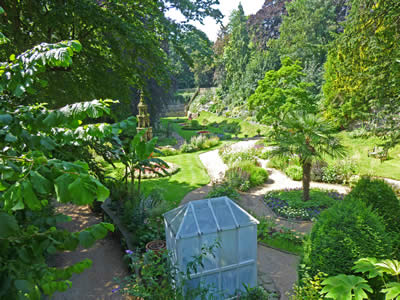
A view over the garden from the rustic bridge |
The gothic style fountain sits proudly as the centre-piece of the garden. The fountain tower is made from a combination of moulded brick with flint buttresses and is built in a style often seen in Victorian churches and chapels. The fleur-de-lys were cast at Gunton’s brickworks near Norwich and the same pattern can be seen in the chimneys of the Queen’s residence at Sandringham. The fountain pond contains water lilies and various fish. |
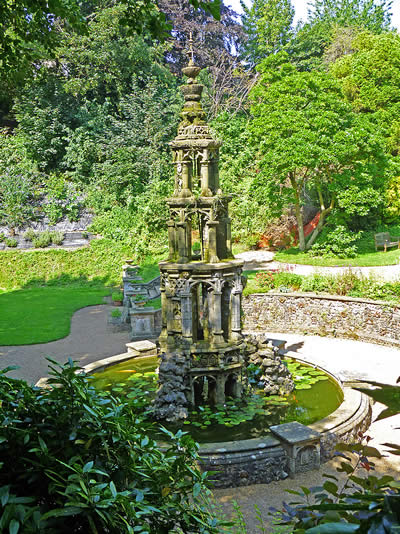
The Gothic fountain at the centre of the garden |
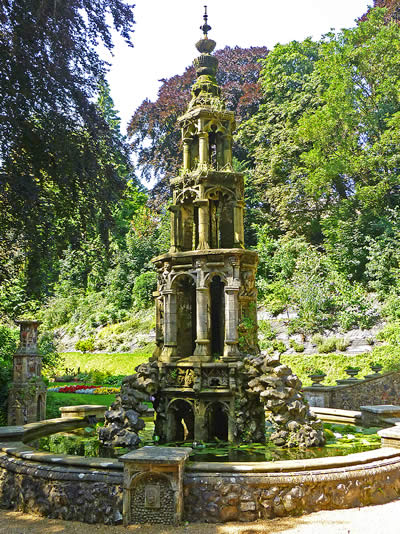
Close up of the Gothic fountain |
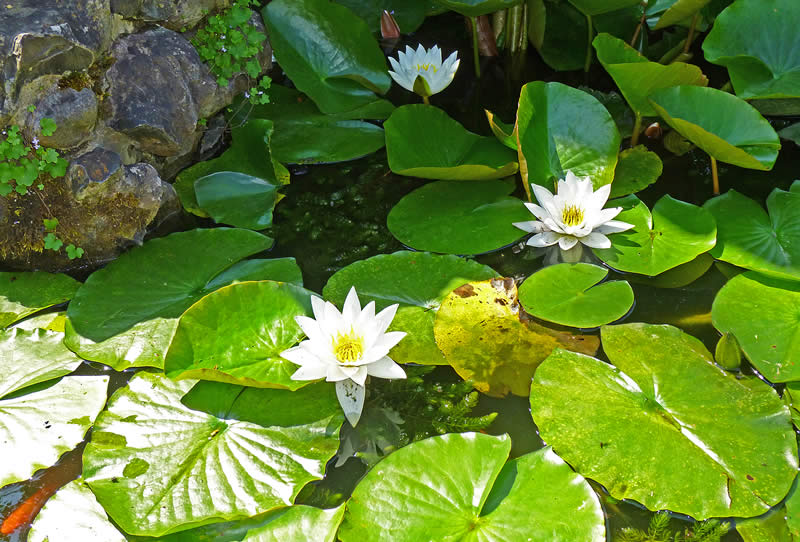
White Water Lilies in the fountain pond |
The floor of the garden is filled with a large lawned area surrounded by elaborate beds and shrubberies. Winding paths take visitors along circular routes and up the garden sides through woodland. Various stone structures are scattered around the garden including walls, towers and arches. The central lawned area with enclosed beds is known as a Parterre de Compartiment. The Parterre idea was taken from a garden seen in Paris, where different coloured flowers are contained in beds separated, in this case by lawn, but typically gravel. |
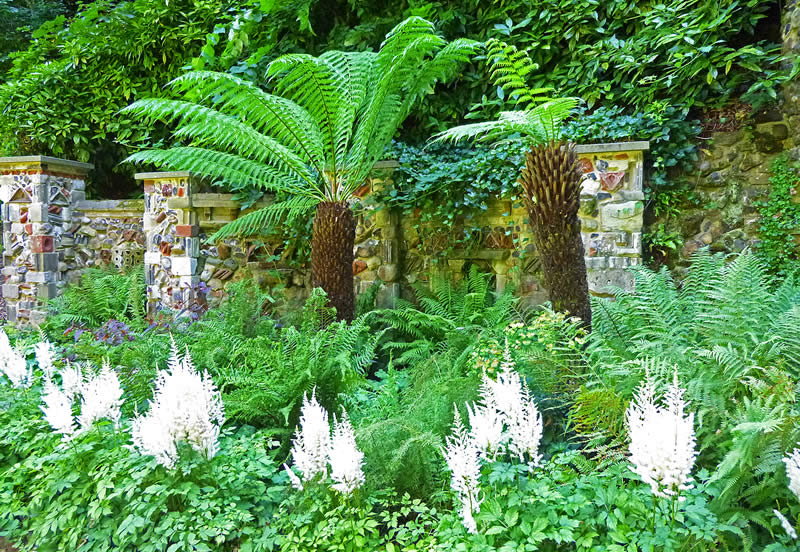
Various ferns and shrubs at the edge of the garden |
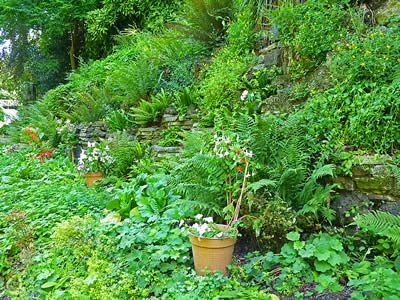
Lush planting around the garden |
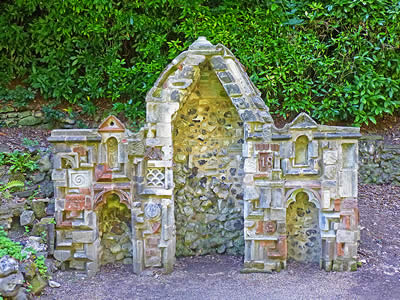
Gothic Alcove Ruins, built from photographs in 2007 |
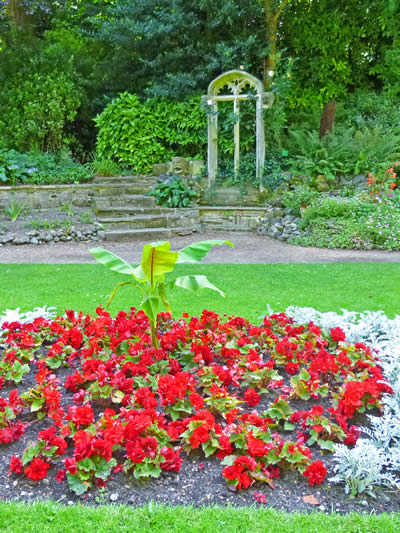
Flower beds with a section of 14th century window from the church of St Giles in the background |
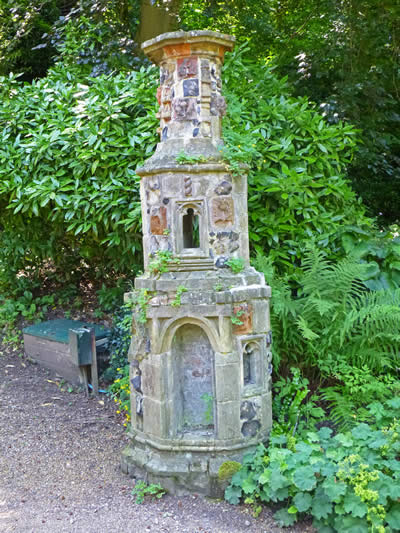
A small tower located around the garden |
The Italian Terrace is a fine piece of civil engineering and is similar in style to the garden terraces of Renaissance Italy. It is constructed from moulded bricks and flints, imaginatively arranged into blank arcades. Visitors can climb the steps of the terrace to the summit and are rewarded by fine views back across the garden. |

The Italian terrace at the head of the garden |
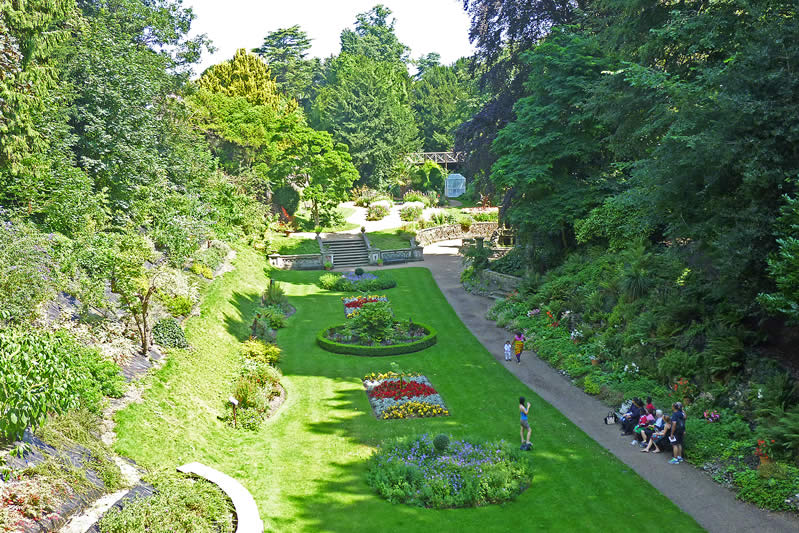
The view over the parterre garden from the top of the terrace |
The Rustic Summerhouse |
|
Situated at the top of the Italian Terrace is a summerhouse that you can rest in or shelter from the weather on rainy days. This summerhouse replaced the original one built in 1856. The summerhouse is typically rustic, with unbarked wood, knot holes, stumps and roughly trimmed branches, complete with a thatched roof. A photograph of the original summerhouse, showing the Trevor family, can be seen inside the building.
|
The medieval wall sits to one side of the garden and is made from a mosaic of brick and tile. The wall contains the date 1871 and various other symbols, faces and shapes. |
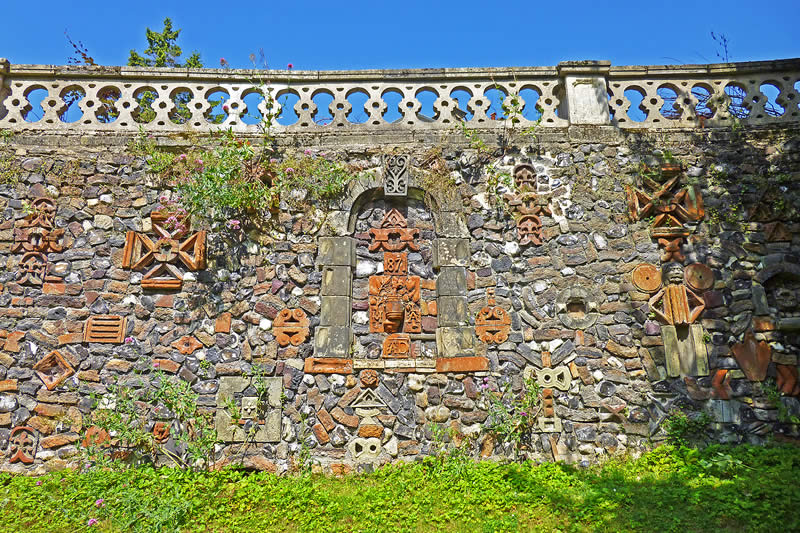
A colourful 'medieval' wall made from a mosaic of tiles and bricks |
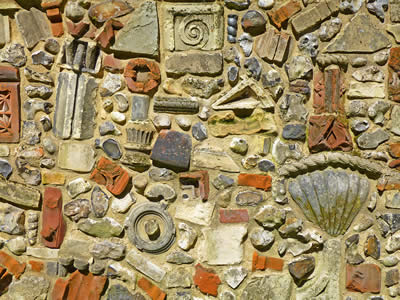
Detail in the 'medieval' wall |
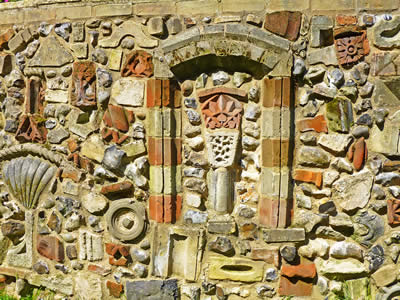
More detail in the wall |
TOP TIP
|
Wear comfortable shoes as some of the paths are steep and can be slippy after some rain. |
10 Things to SEE & DO at The Norwich Plantation Garden
|
 Enjoy the view over the garden from the rustic bridge |
 Investigate the gothic fountain, including the fish and water lilies in the fountain pond |
 Look out for various other garden structures, including the gothic alcove ruins and 14th century window |
 Explore the Parterre flower beds set in the main lawn, edged by various shrubs and a rockery |
 Climb the winding path to the top of the Italian Terrace and enjoy the fine view from the top |
 Rest in the rustic summerhouse and see the photo of the Trevor family in the original Victorian structure |
 Find the medieval wall and examine the detail in the faces, shapes and patterns |
 Climb the various paths into the surrounding woodland |
 Visit during one of the music and singing event days, when various musician's perform in the gardens |
 The gardens are ideal for a picnic! |
|
|
Our Verdict
|
Norwich Plantation Garden is a wonderful secret garden that any garden lover will enjoy exploring. The garden also makes a welcome break from the hustle and bustle of the city centre by offering a peaceful environment to enjoy a spare hour or two on a summers day. |
|
|
TOUR INDEX |
|
|
|
|
|
|
|
NEARBY PICTURE TOURS |
|
TOURIST ATTRACTIONS |
 |
MORE OF OUR WEBSITES |
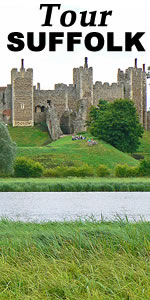 |
 |
 |
| |
|

